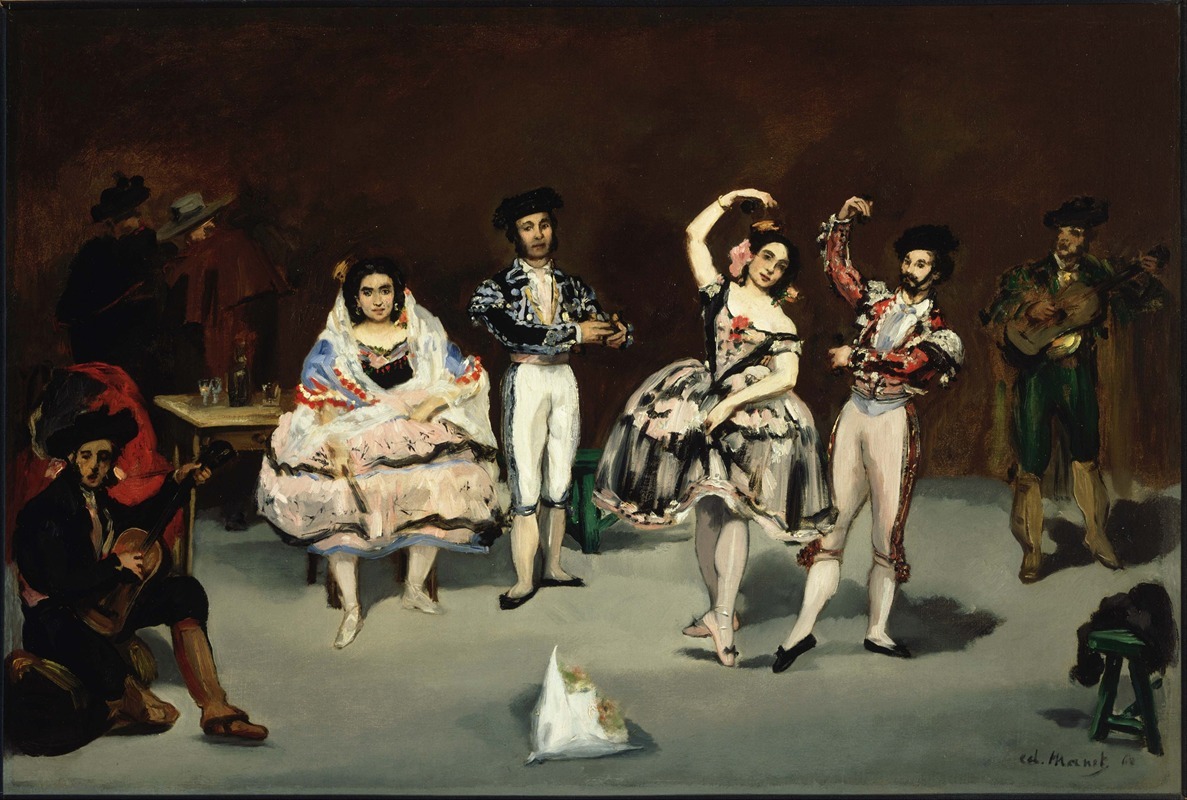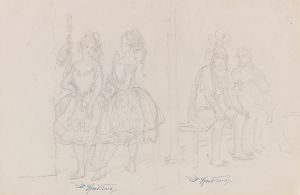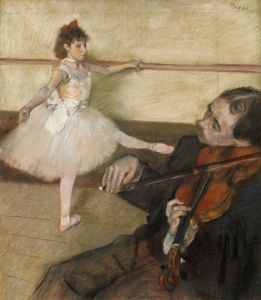
Spanish Ballet
A hand-painted replica of Édouard Manet’s masterpiece Spanish Ballet, meticulously crafted by professional artists to capture the true essence of the original. Each piece is created with museum-quality canvas and rare mineral pigments, carefully painted by experienced artists with delicate brushstrokes and rich, layered colors to perfectly recreate the texture of the original artwork. Unlike machine-printed reproductions, this hand-painted version brings the painting to life, infused with the artist’s emotions and skill in every stroke. Whether for personal collection or home decoration, it instantly elevates the artistic atmosphere of any space.
Édouard Manet's painting Spanish Ballet (French: Le Ballet Espagnol) is a work created in 1862. The painting reflects Manet's fascination with Spanish culture, which was a recurring theme in his art during the early 1860s. This interest was likely influenced by the popularity of Spanish music, dance, and performers in Paris during that period, as well as by the works of Spanish painters such as Diego Velázquez and Francisco de Goya, whom Manet greatly admired.
The composition of Spanish Ballet depicts a lively scene of Spanish dancers and musicians performing. The figures are arranged in a dynamic and theatrical manner, capturing the energy and movement of the performance. The painting features vibrant costumes, including traditional Spanish attire, which adds to the exotic and festive atmosphere of the scene. The use of bold brushstrokes and a rich color palette is characteristic of Manet's style, emphasizing the immediacy and vitality of the moment.
Manet's depiction of Spanish themes was part of a broader trend in 19th-century European art and culture, where "exotic" subjects from Spain and other countries were highly fashionable. This painting is one of several works by Manet that explore Spanish motifs, including his earlier masterpiece Lola de Valence (1862), which also portrays a Spanish dancer.
Spanish Ballet was exhibited at the Salon des Refusés in 1863, an alternative exhibition organized for works rejected by the official Paris Salon. The painting received mixed reactions from critics and the public, as was often the case with Manet's work during his lifetime. Some praised its boldness and modernity, while others criticized its unconventional style and subject matter.
Today, Spanish Ballet is held in the collection of the National Gallery of Art in Washington, D.C. It remains an important example of Manet's engagement with Spanish themes and his innovative approach to painting, which would later influence the development of modern art. The work is celebrated for its dynamic composition and its ability to convey the spirit of a performance, showcasing Manet's ability to capture the essence of his subjects with immediacy and flair.


















